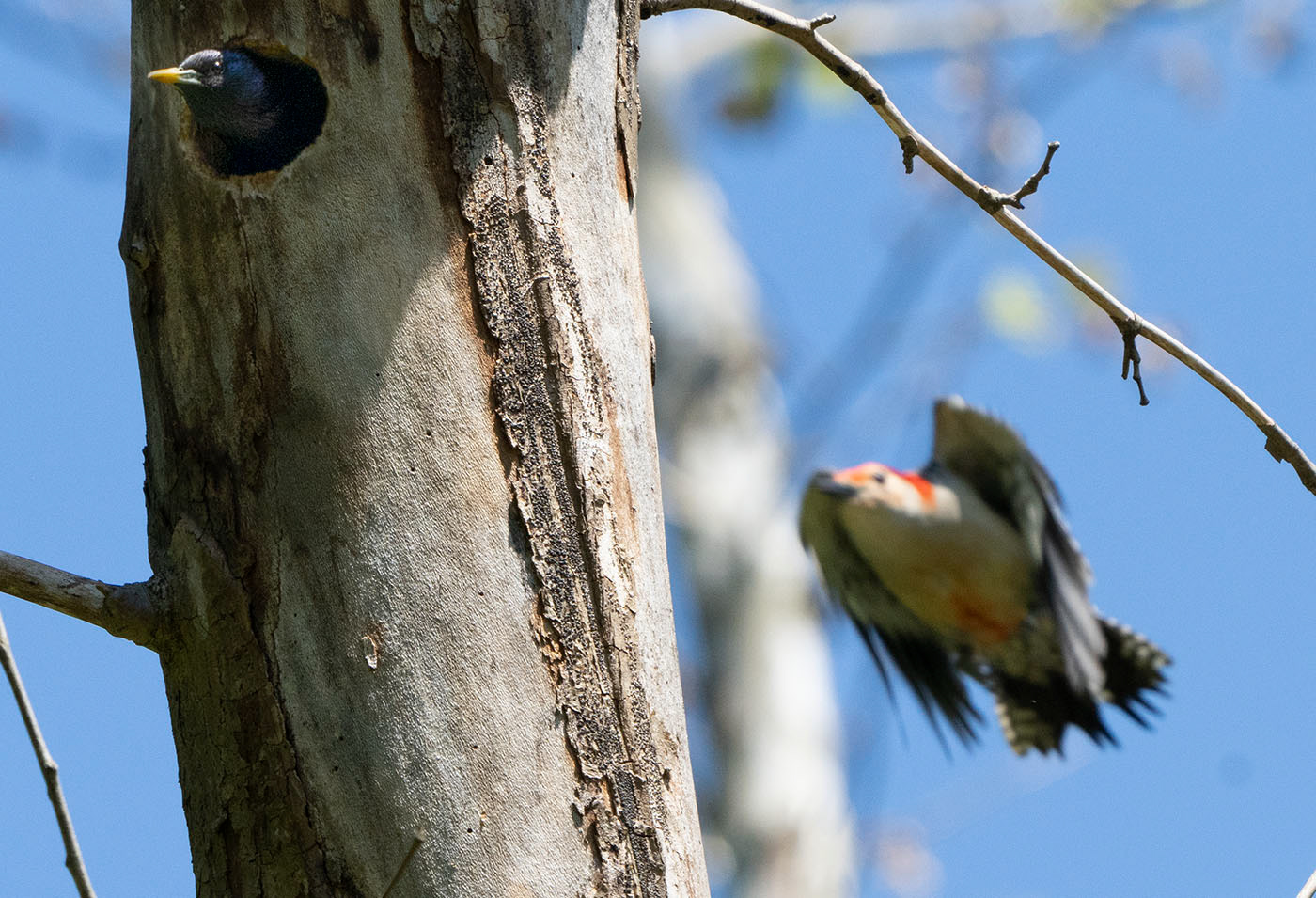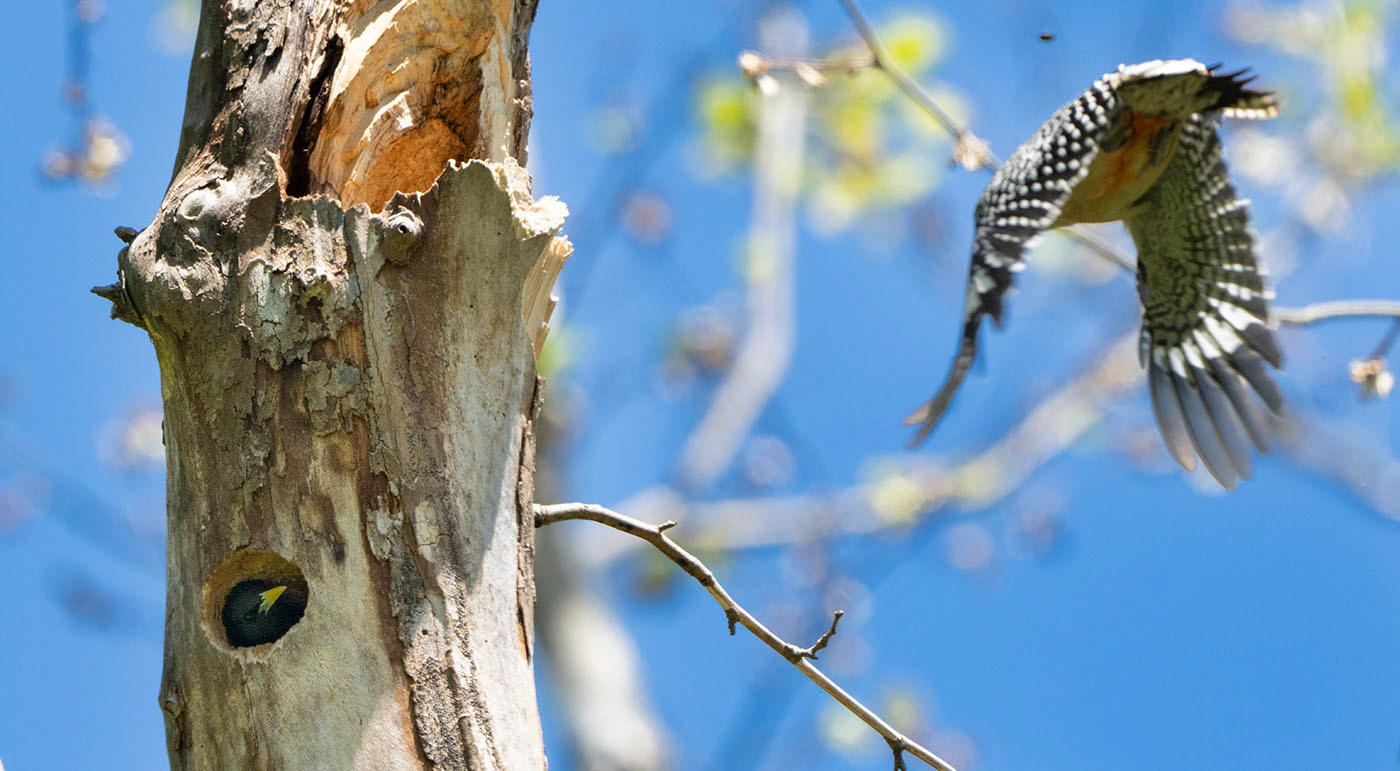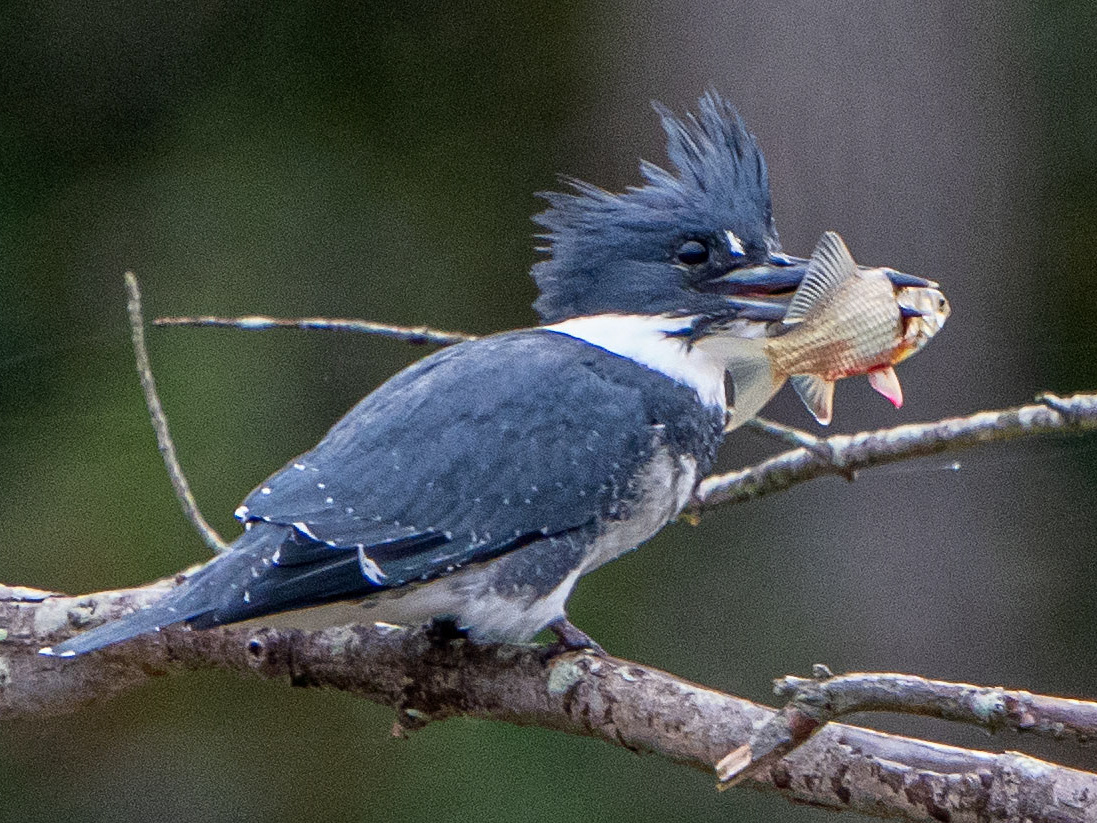A nesting pair of Red-belly Woodpeckers had their nest invaded by European Starlings, a bird known to fight Red-bellies for their nests, sometimes to the death. (Springfield, VA)

All day the starlings come and go at the nest. There are signs of excavation and nest-building. It is unknown how many Red-belly eggs or chicks occupy the nest.

The male and female Red-bellies fly around the tree calling loudly.

The adult Red-bellies engage the occupying Starlings.

Blood and wounds are evidence of the fighting.

The fight goes on throughout the day.

The Red-bellies prevail, and after a few days there is evidence of the parents bringing food to nestlings.

A full week after the Starling attack, a Red-belly chick makes an appearance.

One chick survived the nesting.








